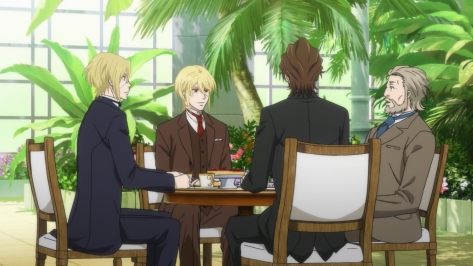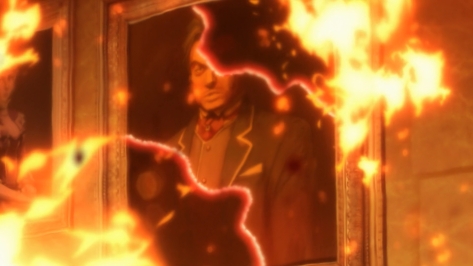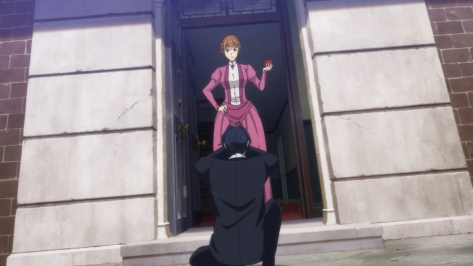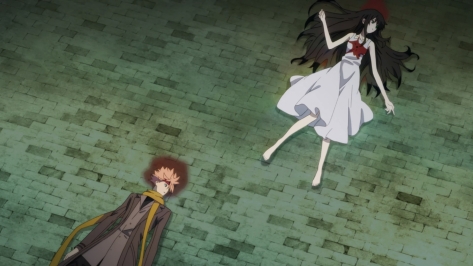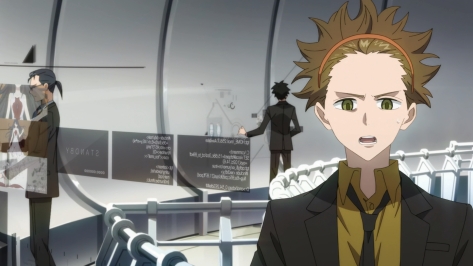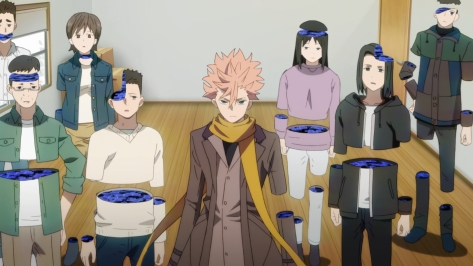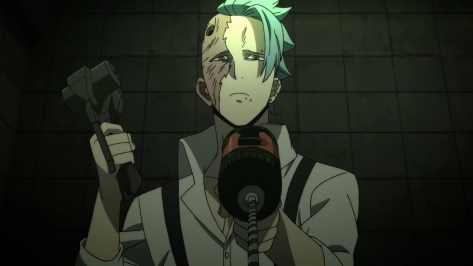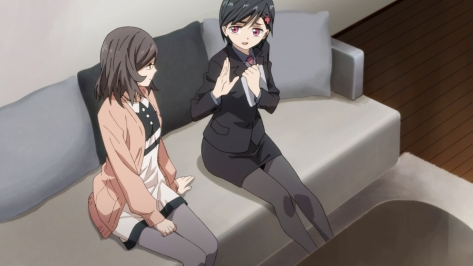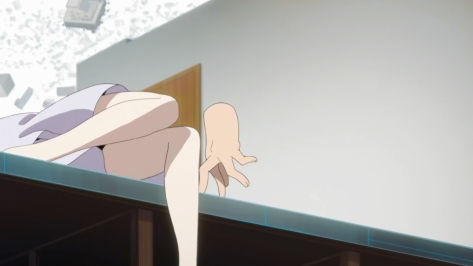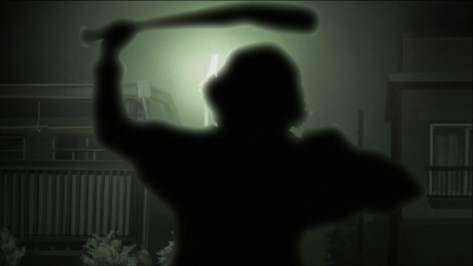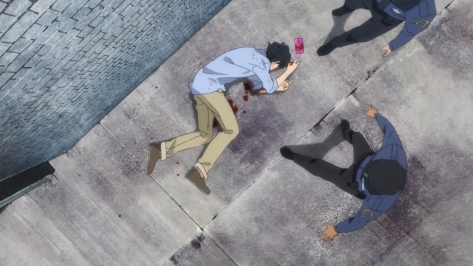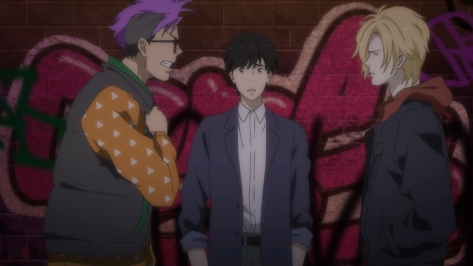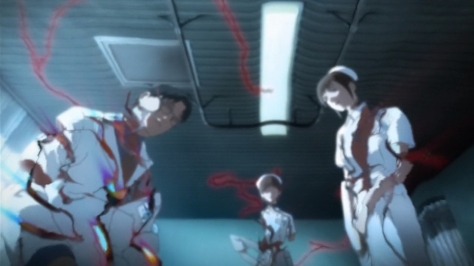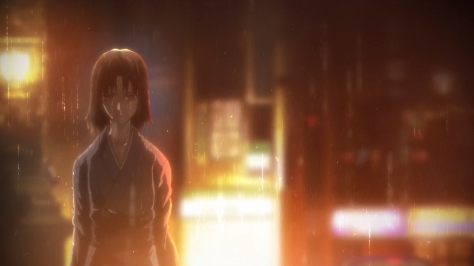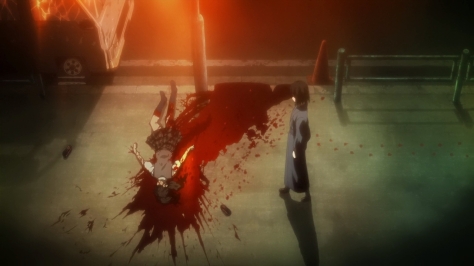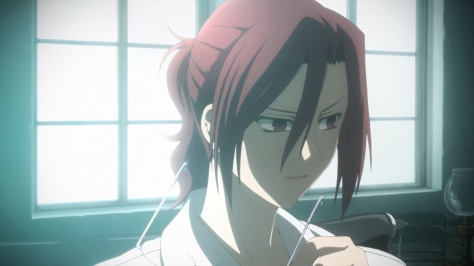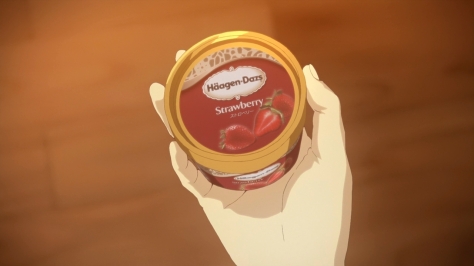Japanese Title: Yuukoku no Moriarty
Similar: Death Note
Watched in: Japanese
Length: 24 episodes (2 seasons)
Positives:
- Production I.G. production values
- Spiffin opening songs
Negatives:
- Poor use and understanding of these iconic characters
- Villains are comically flat
- Artificially intelligent
- James Bonde
(Request an anime for review here.)
Moriarty the Patriot is Dexter by way of the Sherlock Holmes universe, presenting a “what if” alternative to Holmes’s infamous rival. What if Moriarty had committed his crimes for the good of Britain? It’s not the first time someone has taken such an angle for this character, so let’s investigate how anime fared.
William James Moriarty is an orphan adopted into nobility who wants to break the class divide and mete out justice against the rich for their treatment of lower classes. Class disparity is the main theme of Moriarty the Patriot. Early episodes have him helping lower class people enact revenge against the rich that “got away with it.” For example, he helps a tailor kill the nobleman who murdered children, including the tailor’s son, for sport.
The immediate difference those familiar with the original Moriarty will notice about this version is his conversion into that of a bishounen. Professor Moriarty was far from handsome, caring about intellect over vanity. Holmes described him as hunched over, balding, and with sunken eyes. It is weird seeing Moriarty as a simpering pretty boy. The appearance change is of no importance to me. In fact, he looks as I would expect for an anime. His character matters. And this is where Moriarty is a pale imitation of his inspiration.
In the backstory episode of him as a child orphan with his sickly brother, it tries to make him look smart and benevolent by giving advice on all sorts of things to commoners, but it comes across as forced and condescending for a kid. He’s a know-it-all that happens to know exactly everything to advise these stupid commoners. The only bit that worked was him advising a group of bank robbers on dirt around the bank. The explanation is that he read a lot at the grand library. Firstly, an ability to riddle off a bunch of facts for “life hacks” isn’t a sign a genius (and has nothing to do with what made the original Moriarty a smart villain). Second, the Victorian lower class weren’t dumb. It’s up there with the myth that medieval peasants never bathed. Moriarty the Patriot needs everyone else to look like idiots so that Moriarty can prove his “genius” (remember my point in other reviews about how bad early writing echoes throughout a story? Keep this in mind.)
Also, while knowing the data helps with horse racing betting, it isn’t as sure as he makes it out to be. If you could win 80% of the time…just think for a second.
As an adult, they tone down the know-it-all aspect of Moriarty, yet we never witness an instance of actual genius from him. Original Moriarty avoided getting his hands dirty and preferred eliminating people through “accidents.” He was a schemer, not a hitman. Holmes described him as a spider at the centre of a web. This iteration is so unlike the original in appearance, personality, motivation, and methods that I don’t know why they called him Moriarty (commercial familiarity aside). If he weren’t called Moriarty but this were still a Holmesian story, I would never guess who he is meant to be. His plans rely on stupid opponents.
The classism is extreme and ridiculous. Every high-class person spits on anyone lower than them at every opportunity. It’s inaccurate and makes no sense. Think about it – if the people who work for you do a great job, you want them to keep doing that job well. So why treat them in such a manner that would make them worse at their job? We aren’t talking a faceless corporation where a money pusher at the top never sees the people below him. Nothing exemplifies this more than episode four, where a nobleman allows his gardener’s baby to die rather than allow his personal doctor to provide a simple treatment. The gardener falls into depression and the botanical garden, the nobleman’s pride and joy (all thanks to this gardener), falls in quality. When the gardener’s wife tries to take revenge, the show presents it as some great surprise to the noble. What could the motivation possibly be?
I get that some people are scum of the earth – obviously – and money can’t make everyone smart, but these villains are another level of stupid writing. I don’t refer to one or two here. All villains in Moriarty the Patriot are the stupidest characters in the show, which is ironic for a series based on Holmes’s smartest opponent. One guy murders a low class passenger in his expensive room on a cruise ship. Even if you do throw the body overboard, what about the pool of blood on the carpet in your room? This is the genius intellect Moriarty has to contend with?
They all amount to the same motive: “I am rich, therefore I hate poor people.”
The upper class did look down on the lower class in an organised hierarchical sense, where each individual has their place in society and must not step above their station. The lower class weren’t like slaves of the South. Even within the upper class, one could find further structure of which rich families could associate with particular other rich families as equals. Mastering social standing wasn’t an afternoon’s lesson.
The one area in which Moriarty the Patriot is accurate is the charity of nobles. Or rather, the appearance of benevolence by nobles. The Moriarty family takes in the two orphan brothers because it makes them look good to other nobles. Appearance is the material point. A noble doesn’t allow tenants to die on their land because it would look bad. Perhaps nobles care for the lower class employees, perhaps they don’t. Regardless, they care about appearances.
All of this is not to defend nobles or paint them as kind. My point is that nobles would be just as varied and complex a class of people as any other and that making them so two-dimensionally evil is lazy. The final moral message is equally flat.
Most of season one is a series of cases with Moriarty helping victims enact revenge on the rich that wronged them – a revenge of the week, if you will. I thought it would remain this way throughout, acting as a prequel to Moriarty’s encounters with Holmes in the book. Perhaps the clash in The Final Problem (the main Moriarty novel) would be the finale or hint that it occurs after the end of the anime. However, Sherlock Holmes himself enters the story and Watson too. Proceedings switch to a Holmes perspective for a good while before it cuts back and forth, becoming almost fifty-fifty between Moriarty and Holmes.
Holmes is a little closer in depiction to the source material. For one, Holmes was a good-looking man with great care for personal cleanliness (his residence was a mess on account of being a hoarder though). Still, it is weird to see Holmes as a bit of a ditz in this incarnation, always at odds with Mrs Hudson, who is more like a mother/nanny to keep his antics in check. Though as I said, I don’t care about changes as long as they deliver something worthwhile.
The most accurate element of this adaptation is Scotland Yard, still easily fooled by master criminals.
Moriarty the Patriot is better when it follows Holmes, funnily enough, owed in large parts to drawing more from the original Sherlock Holmes cases. It’s evident that the writer for this series would have nothing without another franchise to lean on. The structural shift feels like the intended “revenge of the week” formula ran out of ideas and the author had to return to the source.
The improvement in quality is short lived, sadly, with the introductions of “James Bonde” and Jack the Ripper. James Bonde may just be the worst reference I have ever seen to an iconic franchise. I can’t elaborate without spoiling anything. You should know, however, I actually cringed. Jack the Ripper drops things a level further with supernatural physical abilities, something not presented in the world elsewhere and it tries attributing them to intelligence (?) when he escapes a trap. Overall, anime isn’t sending over its best.
The greatest deception Moriarty the Patriot ever pulled was giving me hope for a great anime with these high production values based on a beloved franchise. Victorian London looks great (could use a full time spellchecker though) and I love the opening songs. My hope mostly worsened as time went on.
I have read the complete collection of Sherlock Holmes and seen a dozen different adaptations, some with greater departures from the source material than this yet still delivered. I would have to go back through the archives to be sure, but I’m confident Moriarty the Patriot is the weakest series to utilise the great detective that I have consumed.
Overall Quality – Low
Recommendation: Not for Sherlock Holmes fans. Others may be able to switch off and enjoy Moriarty the Patriot as a schlock thriller.
(Request reviews here. Find out more about the rating system here.)
Awards: (hover over each award to see descriptions; click award for more recipients)
Positive: None
Negative: None

